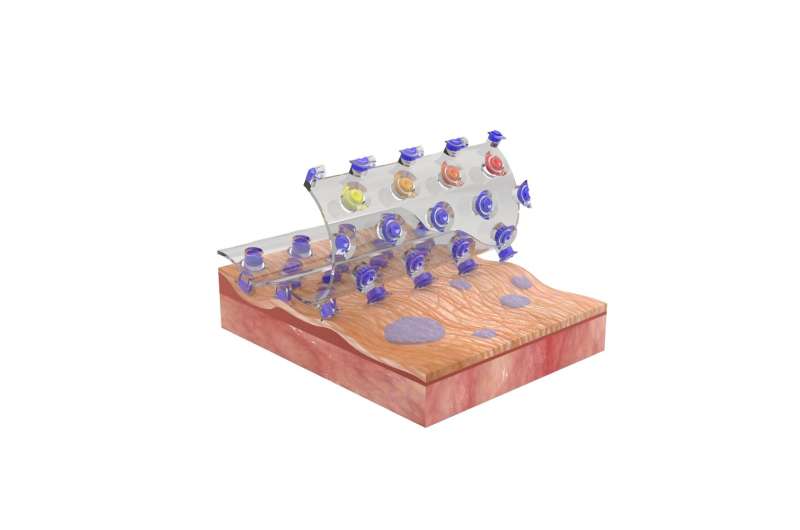A skin-crawling treatment for acne?

Drawing inspiration from nature, a team of international scientists have invented a smart device for personalized skin care modeled after the male diving beetle. This tool collects and monitors body fluids while sticking to the skin's surface, paving the way for more accurate diagnostics and treatment for skin diseases and conditions like acne. The team includes Bo-yong Park, a former postdoctoral researcher at The Neuro at McGill University.
Q&A with Bo-yong Park
What problem did you set out to solve?
Traditional non-invasive diagnostic devices developed for skin care have several limitations. These devices tend to be less accurate, hard to use, and require expensive equipment to analyze results. The chemical adhesives used in the process can also cause skin irritation or sometimes damage, making them difficult to use repeatedly or for a long time. Maintaining adhesion in different conditions like a wet or a curved skin surface can also be very challenging.
Why did you look to nature for inspiration?
Male diving beetles or Hydaticus pacificus are aquatic insects that have evolved special adhesive hairs, or setae, to latch onto their mates underwater. The setae, which are present on the male's forelegs, have unique suction cup-like structures and cavities, providing strong attachment against wet and irregular surfaces. Inspired by male diving beetles, we developed an intelligent device for real-time monitoring of skin health that attaches to the skin's irregular surface.
How does the device work?
We created micro-sized artificial suction cups that can collect and monitor body fluids while adhering to the skin. We embedded fluid-capturing hydrogels within the cavities of the cups to monitor pH levels. The hydrogel changes color with differing acidity levels. Integrating machine learning techniques, we also develop a software application that can automatically quantify pH levels from the color indicated by the pH-responsive hydrogels. We expect that this device will be applied to personalized skin treatment patches, medical adhesive materials, and diagnostic technologies. Based on the results of our research, we expect it could be used for on-site diagnosis of biomarkers for skin disease.
The research was published in Science Advances.
More information: Sangyul Baik et al, Diving beetle–like miniaturized plungers with reversible, rapid biofluid capturing for machine learning–based care of skin disease, Science Advances (2021). DOI: 10.1126/sciadv.abf5695



















